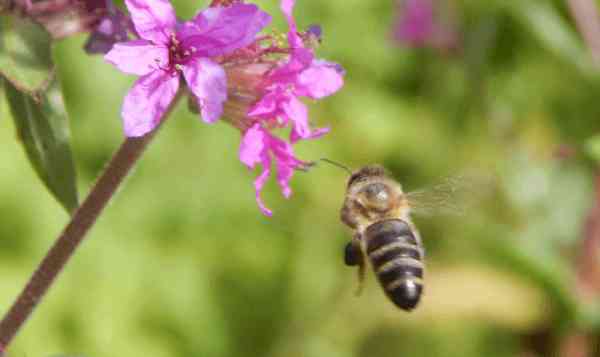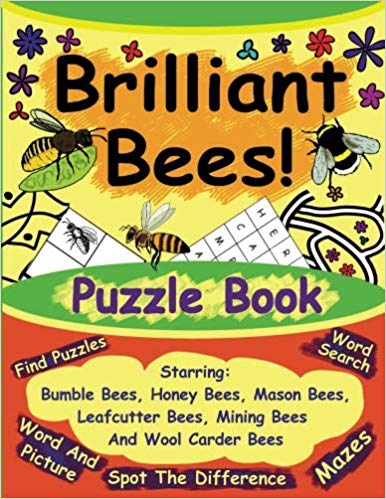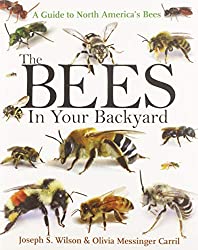Do bees have X and Y chromosomes?
The short answer to the question is:
No
– bees do not have ‘X’ and ‘Y’ chromosomes.
They use a different system of sex determination.
However, in order to understand that system, it is first of all worth providing a very simple explanation of the XY sex-determination system
The XY sex-determination system
The XY sex-determination system is the
system in many animals that determines whether an individual is male or
female. In this system, almost all cells
in the body have two complete sets of chromosomes.
In species that use the ‘XY’ system, females have two ‘X’ chromosomes in almost all their cells (i.e., they are ‘XX’ – both sets of chromosomes have an ‘X’ chromosome); while males have one ‘X’ chromosome and one ‘Y’ chromosome in almost all their cells (i.e., they are ‘XY’ – one set of chromosomes has an ‘X’ chromosome, while the other set has a ‘Y’ chromosome).
Cells with two complete sets of chromosomes are said to be ‘diploid’ – that is they have two complete sets of chromosomes (23 pairs in humans – 46 chromosomes in all), one set from each of their parents.
However, the gametes – sex cells (spermatozoa and ova in humans) are different – they are haploid, containing just one set of chromosomes, because they are produced by diploid stem cells splitting into two equal halves in a process known as meiosis.
Clearly, in humans, the ova (female gametes) will only contain ‘X’ chromosomes, because they are produced by an ‘XX’ cell splitting into two equal parts, while half the spermatozoa (male gametes) will contain an ‘X’ chromosome and the other half will contain a ‘Y’ chromosome, because they are produced by cells that contain both an ‘X’ chromosome and a ‘Y’ chromosome splitting into two equal parts.
When the gametes recombine at fertilization, the resulting individual will have a complete set of chromosomes and will be either ‘XX’ and female or ‘XY’ and male.
Some insects (Drosophila fruit flies, and Abraxas magpie moths, for example) have the XY sex determining system, but what about bees – do bees have ‘X’ and ‘Y’ chromosomes?
Sex determination in bees
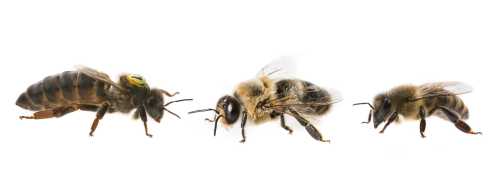 From left to right, a queen, drone and worker honey bee.
From left to right, a queen, drone and worker honey bee.Unlike humans, there are no X and Y chromosomes for bees. Bees use a sex-determination system known as ‘haplodiploidy’. It's estimated that haplodiploidy occurs in around 20%1 of animals, and bees fall into this group too.
Haplodiploidy: How does this system work?
The first (and critically important) difference in the haplodiploidy system, is that females and males have different numbers of chromosomes. Females are all diploid – their cells all contain two complete sets of chromosomes, while males are haploid – their cells all contain just one complete set of chromosomes.
This means that the gametes (the sex cells) are produced differently too: the females produce ova by meiosis (a ‘stem cell’ with two complete sets of chromosomes splits equally to produce two cells, each with one complete set of chromosomes); while a male produces sperm by a process called mitosis (a ‘stem cell’ with one complete set of chromosomes firstly replicates all the chromosomes before splitting into two cells, each with one complete set of chromosomes).
Haplodiploidy in bees
For the purposes of this article, it's simpler to refer to one bee species in explaining this further, so we'll take the widely familiar honey bee - Apis mellifera.
The next important difference in bees is that, after a queen has mated with a male bee (drone) she can choose whether to lay fertilized or unfertilized eggs.
A fertilized egg (female ovum combined with male spermatozoon) will have both complete sets of chromosomes and will be female, while an unfertilized egg (the female ovum without the male spermatozoon) will have just one complete set of chromosomes and will therefore be male.
In simple terms, males develop from unfertilized eggs and are therefore haploid (they have just one set of chromosomes), while females develop from fertilized eggs and are therefore diploid (because they have two sets of chromosomes – one set from the queen that laid the egg, and one set from the male bee that fertilized her).
Beekeepers and researchers are able to identify which eggs are fertilized and destined to become female workers (or queens) or unfertilized and hence males, because the queen lays the eggs in different-sized cells – queen, worker or drone cells.
As an aside, sometimes, a worker bee will also lay eggs. This tendency is usually suppressed by the queen. Worker eggs are usually destroyed by other colony members2, but if allowed to develop, the offspring will be male. You can read more about this on my page: can worker bees lay eggs?
Fatherless fathers with grandfathers
The way males are created creates an interesting situation! Male bees have no father, and can have no sons, but they do have grandfathers and may have grandsons! How?
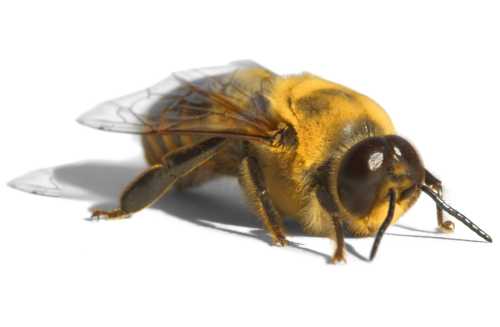 An Apis mellifera drone.
An Apis mellifera drone.Let's illustrate by referring to a single male
honey bee - we'll call him 'Male A'.
The egg from which 'Male A' developed was not from a fertilized egg. 'Male
A' therefore carries no chromosomes from a direct male parent. This
means there was no "father" and 'Male A' is fatherless.
The queen that laid the egg, however, was herself produced from an egg fertilized by a male – the grandfather of ‘Male A’.
So, ‘Male A’ had no father, but did have a grandfather!
Similarly, any eggs fertilized by ‘Male A’ will have two complete sets of chromosomes and will therefore all be female – so ‘Male A’ will have no sons.
But any queens that develop from eggs fertilized by ‘Male A’ may lay unfertilized eggs that will have only one complete set of chromosomes and will therefore develop into males - the grandsons of ‘Male A’.
So, ‘Male A’ will have no sons, but may have grandsons!
References
1. Gempe, T. & Beye, M. (2009) Sex determination in honeybees. Nature Education 2(2):1
2. Kärcher, Martin H., et al. “Killing and Replacing Queen-Laid Eggs: Low Cost of Worker Policing in the Honeybee.” The American Naturalist, vol. 184, no. 1, 2014, pp. 110–118. JSTOR, www.jstor.org/stable/10.1086/676525. Accessed 4 Sept. 2021.
